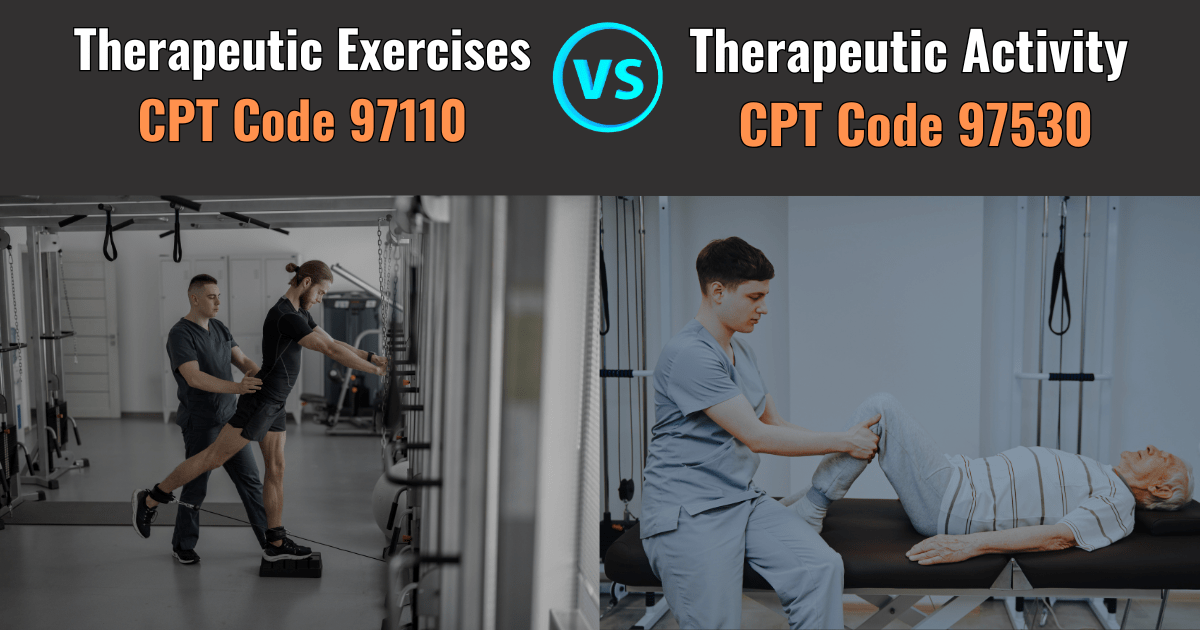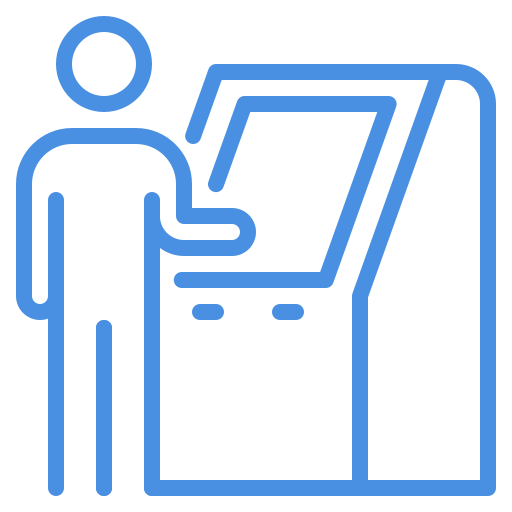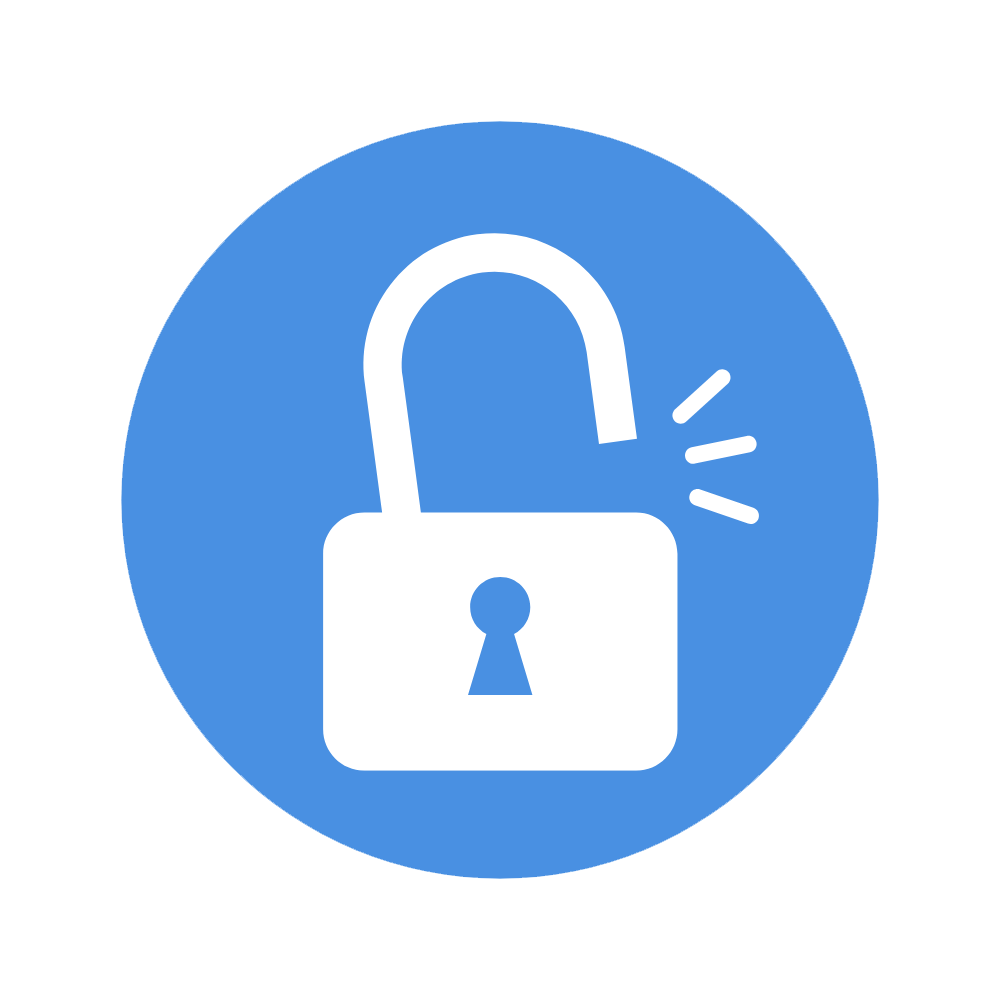Understanding the differences between Therapeutic Exercise (97110) vs Therapeutic Activity (97530) is crucial for accurate documentation and billing. Learn when to use each CPT code, key documentation requirements, reimbursement guidelines, and how to avoid claim denials. Optimize your therapy practice with proper coding strategies to ensure compliance and maximize reimbursement.

Understanding the Differences for Accurate Documentation and Billing
Therapeutic activities and exercises play a crucial role in patient recovery, but proper documentation is essential for ensuring accurate care and reimbursement. In this guide, we’ll explore the differences between therapeutic exercise (97110) and therapeutic activity (97530) and how correct documentation can enhance patient outcomes and streamline therapists’ workflows.
Why Choosing the Right CPT Code Matters
Billing can be one of the most confusing parts of a therapist’s job. Selecting the right CPT code is critical to ensure clinics receive proper reimbursement from insurance providers. Therapeutic exercise (97110) and therapeutic activity (97530) are often confused because they share common goals. However, each code is unique and should be billed appropriately.
If you struggle with deciding whether to bill CPT code 97110 or 97530, here is a detailed breakdown of their differences:
CPT Code 97110: Therapeutic Exercise
What Is It?
Therapeutic exercises involve movements designed to improve strength, flexibility, endurance, and range of motion after an injury or surgery. These exercises are structured and must directly contribute to a patient’s functional improvement.
Key Documentation Requirements
When billing and documenting for therapeutic exercise (97110), therapists must include:
-
-
Body part(s) treated (e.g., shoulder, knee, spine).
-
Specific muscles and/or joints targeted to avoid confusion.
-
The functional goal of each exercise in relation to the patient’s overall progress.
-
Examples of Therapeutic Exercises Billed Under 97110
-
-
Active, active-assisted, or passive range of motion (ROM) exercises.
-
Resistance exercises (isometric, isotonic, isokinetic) to improve muscular strength.
-
Aerobic or cardiopulmonary endurance exercises (e.g., treadmill, bicycle, NuStep).
-
Active stretching to improve flexibility.
-
Therapeutic exercises typically target a single parameter, such as improving ROM or increasing strength. While they contribute to better functional movements (e.g., ADLs, work tasks, sports), if the focus is on real-life movement improvement, the correct code to use is CPT 97530 (therapeutic activity).
CPT Code 97530: Therapeutic Activities
What Is It?
According to Optum 360° and APTA, therapeutic activities involve the use of dynamic activities to improve functional performance. These activities are task-specific and simulate real-world tasks that a patient needs to perform in daily life.
Key Documentation Requirements
When determining whether an intervention qualifies as a therapeutic activity (97530), consider the following:
-
-
Is this a functional activity, such as climbing stairs or lifting objects?
-
Will this improve performance in daily life, work, or sports?
-
Are multiple parameters (strength, coordination, endurance) being addressed?
-
Does this activity directly relate to a specific real-world task (e.g., lifting a box onto a shelf)?
-
Examples of Therapeutic Activities Billed Under 97530
-
-
Lifting and carrying objects to improve work-related strength.
-
Squatting, bending, or reaching overhead for functional mobility.
-
Simulated car transfers for improved daily independence.
-
Stair climbing for increased lower body strength.
-
Balance exercises while performing a reaching task (e.g., standing on one leg while grabbing an item).
-
Billing Guidelines and Reimbursement Considerations
Billing Differences Between 97110 and 97530
-
-
97110 is billed in 15-minute increments and focuses on single-parameter therapeutic exercises.
-
97530 is also billed in 15-minute increments but involves real-world functional movements.
-
Using Modifier 59 for 97110 and 97530
When billing 97110 and 97530 together, Modifier 59 must be used to indicate distinct, separately identifiable services:
Correct Example: “Patient completed resistance training (97110) to improve quadriceps strength. Additionally, the patient performed functional stair climbing (97530) to enhance independence in household mobility. Modifier 59 applied to differentiate services.”
Avoid Overuse: Modifier 59 should only be used when documentation clearly supports separate treatment purposes. Improper use can trigger audits or payment rejections.
Medicaid and Private Insurance Reimbursement
-
-
Medicaid covers 97530 but does not cover 97110—therapists must verify coverage before treatment.
-
Private insurance plans may reimburse both codes but require distinct documentation for each session.
-
Billing Rates for CPT 97110 and 97530
Billing rates for CPT codes vary based on location, payer contracts, and Medicare rates. On average:
-
-
CPT 97110 reimburses approximately $30–$40 per 15-minute unit through Medicare.
-
CPT 97530 generally reimburses at a slightly higher rate since it involves more dynamic activities.
-
For the most accurate reimbursement rates, therapists should check the Medicare Physician Fee Schedule (MPFS) or consult with specific insurance payers.
Common Reasons for Claim Denials and How to Avoid Them
Insufficient Documentation
-
-
Vague Entry: “Patient performed strengthening exercises.”
-
Detailed Entry: “Patient performed 3 sets of 10 reps of resisted shoulder abduction with a theraband to improve strength for independent dressing.”
-
Billing 97110 and 97530 Together Without Justification
-
-
If both are billed, documentation must clearly differentiate them (e.g., one focuses on isolated muscle training, while the other applies strength to a real-world task).
-
Incorrect Use of Time-Based Billing
-
-
Ensure that each 15-minute unit meets the 8-minute rule for Medicare compliance.
-
How HelloNote EMR Simplifies Therapy Documentation
With HelloNote EMR, therapists can:
-
-
Streamline documentation for therapeutic exercises and activities.
-
Automatically apply modifiers to ensure reimbursement.
-
Reduce billing errors and improve claim approvals.
-
Track patient progress with real-time documentation.
-
Sign up for a free HelloNote demo today to see how easy it is to document and bill for CPT codes 97110 and 97530!
Final Thoughts on CPT Code 97110 vs. 97530
Understanding when to bill 97110 (therapeutic exercise) vs. 97530 (therapeutic activity) is essential for accurate documentation and proper reimbursement.
By implementing best documentation practices, using Modifier 59 when necessary, and leveraging an efficient EMR like HelloNote, therapists can improve claim approvals, maximize reimbursement, and avoid costly denials.
Mastering these distinctions helps ensure your therapy practice remains compliant, financially stable, and focused on quality patient care.



















